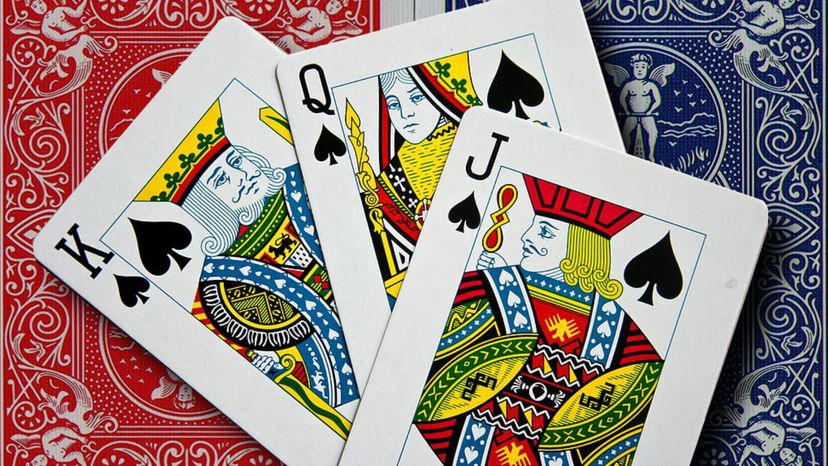
If you ever sit down to play a card game, you'll quickly learn that the jacks, queens and kings — the "court" or "face" cards — are valuable, points-wise. But whose faces are really on these face cards? Are these representatives of some intimidating and pompous monarchs from Tudor times? Or are they just generalized images of royalty through the ages?
As much as it might feel like Henry VIII is metaphorically shouting "off with his head!" when he turns up on the flop, odds are it's just a generic king doing the damage. "Historically, the artwork for court cards never had any official standardization, and was not based on real people," explains veteran BoardGameGeek reviewer EndersGame (who asked that we withhold his real name) in an email interview. "Originally, court cards simply reflected some of the clothing and accessories commonly seen in the royal courts in Europe."
Advertisement
That's not to say that it's impossible that a deck might feature a real king; the artwork varied according to the whims of card designers, manufacturers and the region in which the cards were produced. (Picture cards came into being in Europe in the mid-15th century — centuries after playing cards had become popular.) French and British decks of the 16th century were said to often depict Alexander the Great, Julius Caesar, the biblical King David and Charlemagne on the king cards — representing the four great empires of Greece, Rome, the Jews and the Franks.
The queen cards often included the goddess Athena and Rachel, the wife of the biblical Jacob, among other ladies. Many Spanish and German decks historically eschewed queenly representation in favor of a separate pack of male figures.
"There was a brief trend in late 16th century France to assign famous personages or literary figures to specific court cards," EndersGame notes. "But there was never any universally accepted standard for this, and different regions and printers reflected their own preferences. Some of these connections still persist unofficially, but it merely reflects a trend among some French printers that was temporary at best."
If anything, the depiction of actual kings and queens on playing cards was an after-the-fact notion, according to EndersGame. "This identification of the court cards with famous persons and literary figures only arose well after playing cards were already in popular use, and thus was preceded by decks of playing cards that had artwork merely depicting the nobility in a more general way."
So, if these pictures aren't representing actual people, is there any significance to the objects that they carry on the cards? Or the fact that the king of hearts is the only king without a mustache? No and no: Experts believe the king did originally have a mustache that was lost by copyists over time.
Advertisement


